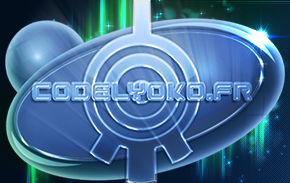
|
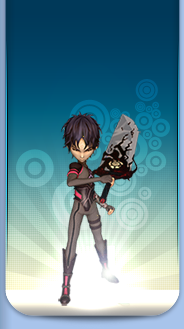 |
The Matrix
| | | Summary
[Matrix: summary & concept] [The plot similarities] [The characters] [Similarities in bulk]
Disclaimer
This is a hybrid file.
It belongs to the Lyokodreamers website and specifically to its writer: Pendragon. After our friendly meeting at the preview of season 4 in Paris, we planned to swap two files. With the updates on season 4, this project was delayed. Unfortunately, the Lyokodreamers website is today and at the moment stopped on hiatus. However, Pendragon kindly authorised me to use the file and to add modifications I found useful.
So I took off some parts that seemed superfluous and I reorganised and completed others!
The big modifications the file undergoes are understandable because of its objective. Pendragon wanted to reveal the similarities between The Matrix and Code Lyoko. As for me, the file is concentrated on the explanation of The Matrix as a source of inspiration for the Code Lyoko Universe. So I developed some key parts, while I completely deleted others which were a matter of anecdotal resemblance.
With my best regards to Pendragon,
without whom this file wouldn't be here today. | | |
 | Matrix: summary & concept | |
|  | To allow you to get more quickly absorbed in this file, here is a summary of the epic of Neo, Morpheus and Trinity:
For many centuries, man perfected all kinds of technology relating to robotics. Around 2199, they pushed artificial intelligence so far that machines gained the ability to think. Dependant on solar energy, they finally went out of control, striving for survival, and a war against humans broke out. To deactivate them forever, the humans worked to remove their only power source, the sun. Chemists managed to veil all of Earth's stratosphere with a permanent cloud, blocking out the light rays. They thought they could be free of the machines...
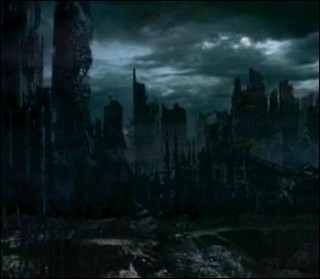 “Welcome...to the desert of the real.”
“Welcome...to the desert of the real.”
 “We don't know who struck first, us or them. But we do know it was us that scorched the sky.”
“We don't know who struck first, us or them. But we do know it was us that scorched the sky.”
However, contrary to all expectations, they found another power source. They became aware of all the electrical power contained in human bodies. Thanks to a vast virtual network, called the Matrix, they plunged humanity into an artificial sleep. There are huge farms. Every man is born industrially. His/her body is now pierced with many holes, which allow the machines draw energy from them.
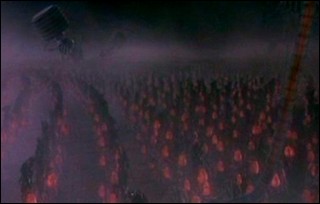 “We are grown.”
“We are grown.”
To put it simply, the machines found a way to change their creators into giant batteries. When someone dies, his/her body is liquefied, to feed the living.
 “...to change a human being into this...”
“...to change a human being into this...”
In the virtual universe, called the Matrix, everyone evolves according to a predefined life. The most tiny detail is programmed, from the taste of a food, to the colour of a pigeon's feathers. Everything is just computer coding. Th humans think they are living in reality, identical to our time's reality, without suspecting that they are actually at the mercy of artificial intelligence.
However, there is, in this world of darkness, the last bastion of a free humanity. This refuge has the name of Zion, and is located in the heart of the Earth, safe from the machines. Ships are sent in huge canals which criss-cross the planet to send humans back to reality. Their mission is to go and get the "sleeping" in the matrix. In sort of sewers, they must face dreaded "sentinel" robots, which have the single goal to destroy.
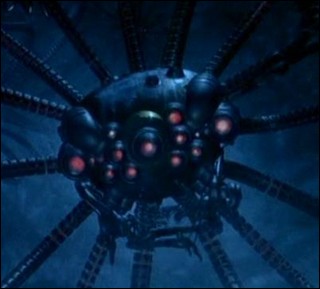 The sentinels... Robots programmed to exterminate the human race...
The sentinels... Robots programmed to exterminate the human race...
To enter the Matrix, the rebels connect to the posterior part of their skull a cable which allows them to "virtualise". Once in the nework, they are tracked down by control programs: the Agents. They make sure that the matrix runs smoothly, and are endowed with supernatural powers.
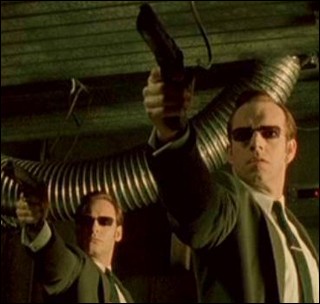 The agents... Omnipresent in the Matrix...
The agents... Omnipresent in the Matrix...
In the virtual word, all the rebels have extraordinary powers, like the ability to move quickly, or the incredible martial arts tricks they can do.
They follow the advice of a program: the Oracle, which they use as a guide. This is how Morpheus and Trinity found Neo: the one who masters the universe of the matrix. He will be led to meet the designer of the matrix: the Architect.
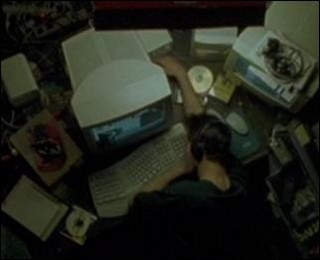 A little programmer, who will hold the fate of the humanity in his hands...
A little programmer, who will hold the fate of the humanity in his hands...
The fate of two worlds will greatly speed up. To exterminate the human race, thousands and thousands of sentinels are sent to the doors of Zion. The hope of humanity will rest on the shoulders of a young ex-programmer: Neo. |  | |
|  | Two virtual worlds linked to a terrestrial world
In relation to the context, the American trilogy shows us a devastated Earth in around 2199, contrary to Code Lyoko, which shows us an Earth as we know it, in our time: the 2000s.
Both scripts include a close link between virtual worlds and reality.
The concept of a digital world imposes as a basic leitmotiv and is the key to the success of the two works, the keystone of the script.
Let's begin with the differences.
Lyoko is a virtual world generated by a computer. To go there, the body has to be disintegrated, the mind changed into virtual data, and then it is transmitted to a virtual body the computer creates.
We're conscious of being in this world. Lyoko wants to duplicate Earth's environments but doesn't do it very well. The Sectors are vaguely reminiscent some areas of our world, but nothing more.
Then, feelings aren't complete. We only have two senses: sight and hearing, and we shouldn't feel pain.
We can't be on Lyoko and in the real world at the same time!
The Matrix is generated by the machines. The whys isn't enormously detailed in the trilogy. However, accessing this world is less brutal than accessing Lyoko, although a tiny bit barbaric! The people who are in the Matrix all are humans from the real world. Their brain is plugged into a cable which sends their mind into the Matrix.
The humans are physically in the real world but their soul enters the Matrix! The Matrix doesn't really exist strictly speaking, it is an illusion: a group fantasy which every connected human is subjected to.
 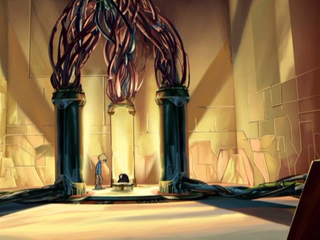 In Code Lyoko, the body is disintegrated then recreated in the virtual world – In The Matrix, people's minds are connected to the phantasmagorical common space which is the Matrix
In Code Lyoko, the body is disintegrated then recreated in the virtual world – In The Matrix, people's minds are connected to the phantasmagorical common space which is the Matrix
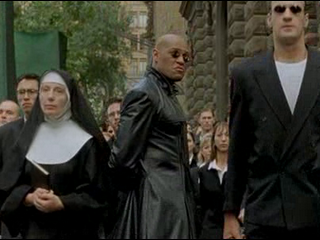 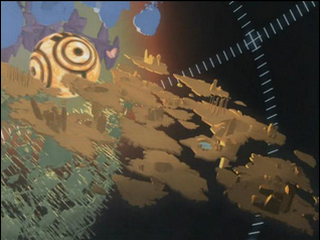 Though Lyoko looks like a video game... The Matrix is an illusion aiming to persuade the sleeping and plugged-in humans that they are in the real world
Though Lyoko looks like a video game... The Matrix is an illusion aiming to persuade the sleeping and plugged-in humans that they are in the real world
Let's go over to the resemblances!
Firstly, Lyoko and the Matrix represent two virtual universes managed by data-processing...where we can be digitised, or should I say, be "virtualised". However, as I explained above, the concepts are different on both sides.
Second important point: the digital worlds are equipped with a 3-dimensional universe. Important common point: these two worlds are malleable for the entity who controls them. For The Matrix, it is the machines. For Code Lyoko, it is simultaneously Jeremy, XANA or Hopper.
From there, third element: in the two worlds, an "evil" entity has henchmen at its disposal, which are in charge of preventing the heroes from foiling their plans. In The Matrix, it is the "agents", powerful non-human programs which can appear anywhere in the Matrix. In Code Lyoko, it is XANA's monsters.
Finally, the heroes have special powers in the virtual world.
Their powers are partially innate...: Neo has powers linked to his status of "The One"; on their part, the Lyoko Warriors have powers after being virtualised (Aelita always had her Creativity).
...and partially acquired: programmed by a operator! In Code Lyoko, we all know that Jeremy programmed Aelita's wings or accidentally deleted Odd's Future Flash. In the Matrix, the heroes can "download" skills like martial arts or the ability to pilot a helicopter.
Let's note at last, that the intentions aren't the same when it comes to the message that the two works want to send about virtual worlds.
In The Matrix, real and virtual are only one. Note as an example that Neo, the One, keeps his supernatural powers in the real world, like Yumi in Garage Kids. He has a sixth sense and can destroy the Sentinels (robots).
We can so easily see that the link combining reality and fiction is showed as transparent in Matrix: the two worlds overlap.
In Code Lyoko, the distinction is voluntarily clearer! It is one of the divergence zones that the Moonscoop writing team highlighted. Indeed, the series targets children from ages 6 to 12, although the Lyokofan communities tend to lean towards the older age groups. Either way, the cartoon doesn't just aim to entertain, but also to educate.
Jerôme Mouscadet, the director of the series, clearly affirmed their intention, to himself and to the ex-writing director, Sophie Decroisette, about the separation of the imaginary. He aims for children to keep their feet on the ground. We mustn't confuse reality and dreams, concrete and imaginary.

"We wanted to make the children understand that there's the real world on one side, and on the other side, the imaginary. And that they are totally different."
Jérôme Mouscadet, during the advance screening of season 4 on the 5th of July 2007
And the difference is clearly marked on the visual level: in The Matrix, the virtual world is a copy of the world in which we live (lived). In Code Lyoko, Lyoko looks like a video game! We know that it is unreal and even if some of us dream of going there, nobody would want to live there: only two senses, landscapes that quickly become...repetitive!
The battle between man and machine
A great science-fiction classic!
In each of the universes of the two series, the plot spins its web around a same recurrent theme: the fight between man and machine. A commonly-used theme, trying to predict what tomorrow has in store for us, according to the opinion an author, each time different.
Code Lyoko is based around a fight between teenagers and an artificial intelligence: XANA. XANA's objectives evolve but always include a conflict against the human race.
In The Matrix, it's the free mankind against the machines.
Two evident similarities between the "bad guys" of each work:
Initially, XANA had the project to exterminate mankind. In The Matrix, the objective of the machines is to exterminate the free mankind, in other words the core of human beings who aren't held in captivity by the machines.
After escaped onto the Network and learnt some lessons thanks to the returns to the past, XANA changes its objective: it wants to dominate mankind, thanks to an army of robots, that it creates with the Replikas. On this point, it looks like the machines from The Matrix which want to rule the humans in order to extract their energy.
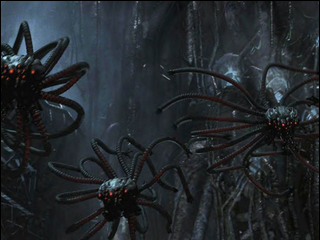 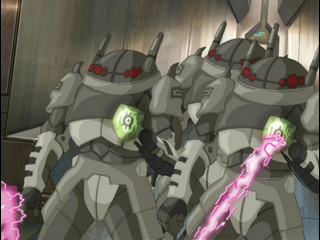 Different robots, but a same goal: subdue the humans
Different robots, but a same goal: subdue the humans
At last, the final point of comparison but not the least: the backstory of these two beautiful stories.
The scenario strictly follows the same line: man creates machine. Machine overtakes man. Man tries to turn off machine. Machine tries to destroy man.
For more information about the similarities between the two éminences grises of the Matrix and Lyoko...lower in the file.
A small group with the fate of humanity on their shoulders
In every good movie and in every good series, there is an inevitable common point: heroes. They're there to allow the viewer to relate themselves to a precise character, apparently... (Yeah! Yeah!)
In both cases, the fate of mankind is assigned to a small group.
The main characters in The Matrix are Morpheus, Neo and Trinity.
In Code Lyoko, the famous group of: Jeremy, Odd, Yumi, Aelita, Ulrich.
In both cases, these groups of individuals have similarities.
They are linked by friendship, or even love, exceeding the strict frame of their professional mission as saviours of mankind. Let's look into the "human" case at length...
The weak, sentimental humans...against the perfect, rational machine
From here, for the first time, their too-human feelings often become a problem in their mission! In The Matrix, Neo makes the choice to save Trinity instead of fulfilling his role of the One: At the time of reaching the source which could have saved mankind, he prefers to save his beloved. In Code Lyoko, the friendly or loving quarrels of the heroes regularly put them in critical and dangerous situations because emotion overtook rationality.
Nevertheless, this established fact is in reality just a snare, and it's there that we find a crucial point on which Code Lyoko was probably inspired by The Matrix. It is the humanity of the heroes, with their strengths and their weaknesses, that allows them to defeat the machines!
I'll explain: in Code Lyoko, sure Ulrich's rants put the whole group in danger, sure XANA played with the heroes' feelings to manipulate them, sure Aelita got tricked 25 times like an idiot when XANA played with the memory of her past...
But in the end, without the heroes' fine and unique friendship, the fight against XANA was doomed to failure. It's only in their friendship, in the hope they had to see Aelita materialised one day, in the fierceness they had to find William etc. that they could draw the energy to hold out until the end and to defeat XANA.
In The Matrix, the scenario is similar.
Neo is the seventh One to exist. All his predecessors only just saved mankind but didn't manage to stop the war between man and machine. But Neo has a distinctive characteristic that the former Ones didn't have: he fell in love with Trinity.
It is this love that makes him turn away from the path he should take. And it's because of this that he has to find another way: from that, he achieves a result the others Ones didn't obtain: peace between machines and men.
In both cases, the triumph of mankind over machine is possible thanks to the fact that human beings have feelings and aren't just functional and rational beasts.
We can also compare two cult scenes of each of the two series:
In episode 24 “Ghost Channel”, XANA loses because it is unable to grasp the concept of friendship, which urges Jeremy to virtualise himself onto Lyoko despite his fright.
In the third part of the Matrix trilogy, Agent Smith has a famous exchange with Neo in which he denies the existence of love and of most other human feelings.
 "Do you believe you're fighting for something? For more than your survival? Can you tell me what it is? Do you even know? "Do you believe you're fighting for something? For more than your survival? Can you tell me what it is? Do you even know?
Is it freedom? Or truth? Perhaps peace? Yes? No? Could it be for love? Illusions, Mr. Anderson. Vagaries of perception. The temporary constructs of a feeble human intellect trying desperately to justify an existence that is without meaning or purpose. And all of them as artificial as the Matrix itself, although only a human mind could invent something as insipid as love."

"XANA can make mistakes too! He only has theoretical knowledge of the real world. (...) XANA's knowledge of people is only approximative!" |  | |
|  | A Chosen One
Aelita and Neo both represent the One, who controls the virtual world and who can counter the enemy.
On one side, Neo is theoretically an ordinary man under the influence of the machines. He lives as a computer programmer in the Matrix, until Morpheus picks him up. Neo has no idea of his past, and neither does he, or at least, of his destiny as the One.
After becoming aware of his powers in the Matrix, he obtains unique abilities. He can act on the Matrix like nobody else: fly at high speed, stop the bullets with his mind, distort space, move at high speed... He senses enemy programs, like the Agents.
On the other side, Aelita, woken up by Jeremy and with no memory of her past, is the Guardian of Lyoko. She owns the keys which allow her to do many things, and this is where the similarities with the One of the Matrix appear.
The most important common point is her ability to influence the Sectors thanks to her power of Creativity...the mastery of the virtual world in its entirety.
She is the only one who can deactivate the towers, just like Neo is the only one able to destroy the machines.
Common power: a sort of sixth sense which allows Aelita to detect the infected towers, while Neo can see the agents who have escaped from the Matrix with a human appearance.
Common point between the Ones: they always care for their friends. On several occasions, they ask them to let them act alone...and they always have help with or without their agreement.
And finally, don't forget that it's Aelita and Neo who put an end to the perpetual battle and save the world.
Yet, their best similarity may be their mission, in which they feel very invested.
An operator
It would have been a real pleasure for me to compare Jeremy and Tank... But in the light of the sequel of the first movie, I can't do this entirely. The actor, Marcus Chong, having a quarrel with the directors, the Wachowski brothers, has been removed from the original script, being killed in the first movie... He has been replaced by another operator in movies 2 and 3: Li.
During each one of their trips into the Matrix, the heroes are guided by an operator. Remaining in the ship from which the heroes connect to the Matrix, he permanently watches over their progress in the virtual world and guides them, helping them to escape the Agents in particular. He also is in a position to add abilities for his friends. He can for example teach Trinity exactly how to pilot a helicopter in a record time.
In the case of Code Lyoko, you certainly recognised the good old fair-haired boy, the 1.47m (4'8") tall Jeremy Belpois. He also guides his friends, leads them to the towers, warns them about oncoming monsters... It's the same principle. He's also the one who manages his friends' vehicles: the Overboard, Overwing and Overbike.
As we already said, he can also program abilities for the heroes: a pair of wings, teleportation, etc...
In both series, the operator's life isn't so easy... We can think that they are cushy there, quietly sit in their steel chairs while their friends risk their lives. That's not the case. It's quite the opposite: they are in the direct line of the enemy's attacks. In the case of The Matrix, it is the Sentinels, which attack the ship or even traitors in the heart of the team. In Code Lyoko, Jeremy faces XANA's attacks in the form of possessed people: the xanafied.
A scientist at the origin of the evil
Yeah, don't deny the reality... Franz Hopper may be really pitiful to me, and also to you I presume, but really it is he himself who is the origin of this whole mess. Franz Hopper created Lyoko, as well as the Supercomputer in which it is established, and also XANA!
The one comparable to Hopper is none than the Architect in The Matrix. He's the one who conceives the Matrix in its entirety, in other words the different versions of the Matrix until it becomes suitable for men. So he created the virtual world in question.
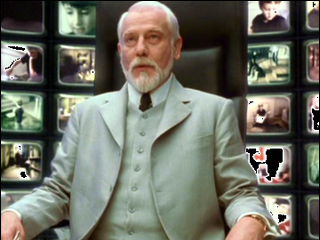 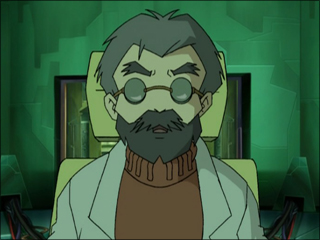 The Architect & Franz Hopper
The Architect & Franz Hopper
In the same way, the two men wanted to create a virtual universe in which humans could acquire a perfect, controlled life far from danger.
Moreover, both of them hide themselves in their creation in a certain way, the Architect chose to stay in the source itself, access to which is relatively difficult. Hopper ran away from XANA and found refuge in the Digital Sea.
You will however notice an enormous difference which separates the two men. The Architect, who lies in the source of the Matrix, doesn't want to change anything at all and seems to take the side of the machines against a mankind who, obviously, rejected his work and the alienation it represented. In contrast, Hopper will do anything to correct his mistakes, and will succeed, at the cost his life. |  | |
|  | And to finish off this file in a lighter and more image-filled way, a gallery of various similarities and allusions in Code Lyoko to its predecessor!
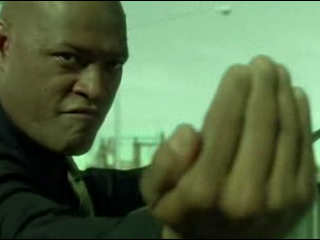 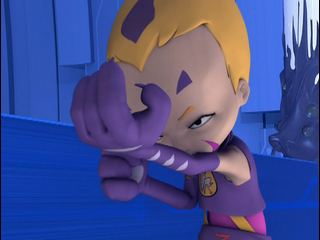
The most obvious and indubitable allusion! This sign of provocation inviting the monsters to fight is taken directly from The Matrix! We see it twice: the first time by Odd to a Creeper in episode 49 “Franz Hopper”, and the second by Ulrich to his clone in episode 51 “Revelation”.
 
Because for a super bad guy to be popular, he has to look cool!
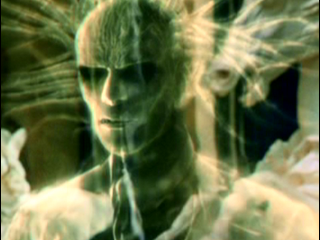 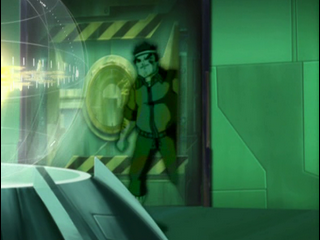
Like the twins in the Matrix, spectres and xanafied people can dematerialise to traverse obstacles and dodge blows.
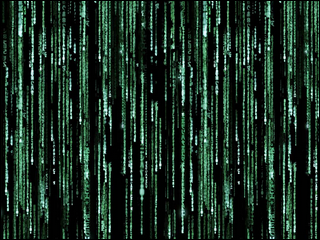 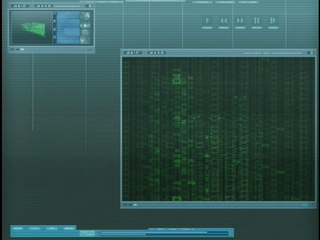
The universal binary language of the computer networks
 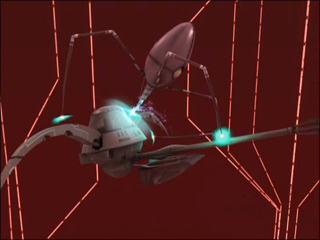
Drills and men
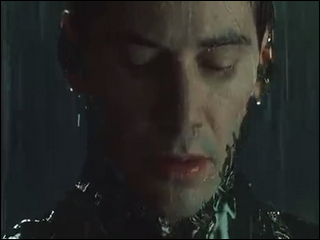 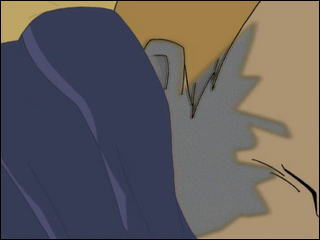
When Smith changes Matrix residents into himself, their bodies become covered in an unknown black substance that is reminiscent of XANA's spectres infiltrating the bodies of whoever they want to possess.
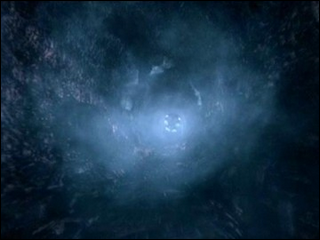 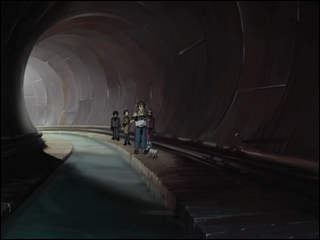
The heroes from The Matrix are forced to travel in the real world from inside innumerable galleries that descend from the centre of the Earth towards Zion, in order to avoid the dreaded Sentinels! The heroes of Code Lyoko also go through the sewers to reach the factory without attracting attention.
A very underground setting for the saviours of mankind!
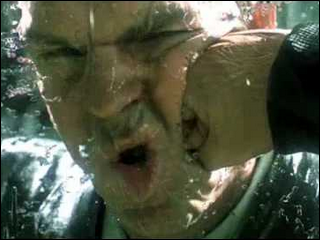 
Probably the slowest punch in the history of cinema...
Let's focus on the direction, even if they're not specific and exclusively stemming from the Trilogy, one of the trademarks of the Matrix saga is the slow-motion which will freeze the wild action scene on a key point before the speed picks back up again.
The direction of Code Lyoko, on this side, really got inspired from Matrix by making some fights more dynamic with slow-motion, or even pausing on a scene before moving the camera.

 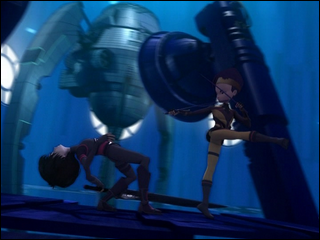
Still on the direction, another typical technique of the Matrix saga is bullet-time. This effect, often reused in other movies, is obtained by putting a series of cameras in a circle and activating them at the same moment, or one right after the other in a short time frame. It gives a famous moment of slow-motion revolving around a scene at a precise moment... We find this plenty of times during fight scenes of The Matrix.
Bullet-time is also used in the French series (episode 70 “Skidbladnir” among others). Certainly, we can't really talk of bullet-time because the direction is animated, so computer-made, but the concept is still there!
|  | |
| | | Conclusion
Who would have thought that an American movie, whose influence even branched into creating a philosophical movement, would have a direct link with Code Lyoko? Yet, this file will have, I hope, proved that it does indeed exist.
Its similarities with the American trilogy remain striking in many respects, and The Matrix is the most well-known of the sources of inspiration of Code Lyoko, even if it's not the only one. Some would even say that Code Lyoko is just a childish version of Matrix.
A last common point reunites these two.
Despite the some years of difference between when the two were made, on a historical level, the two works are clearly contemporary! They are above all the heirs of a long science-fiction movement which reached a certain highlight at their time. | | |
|
 |
